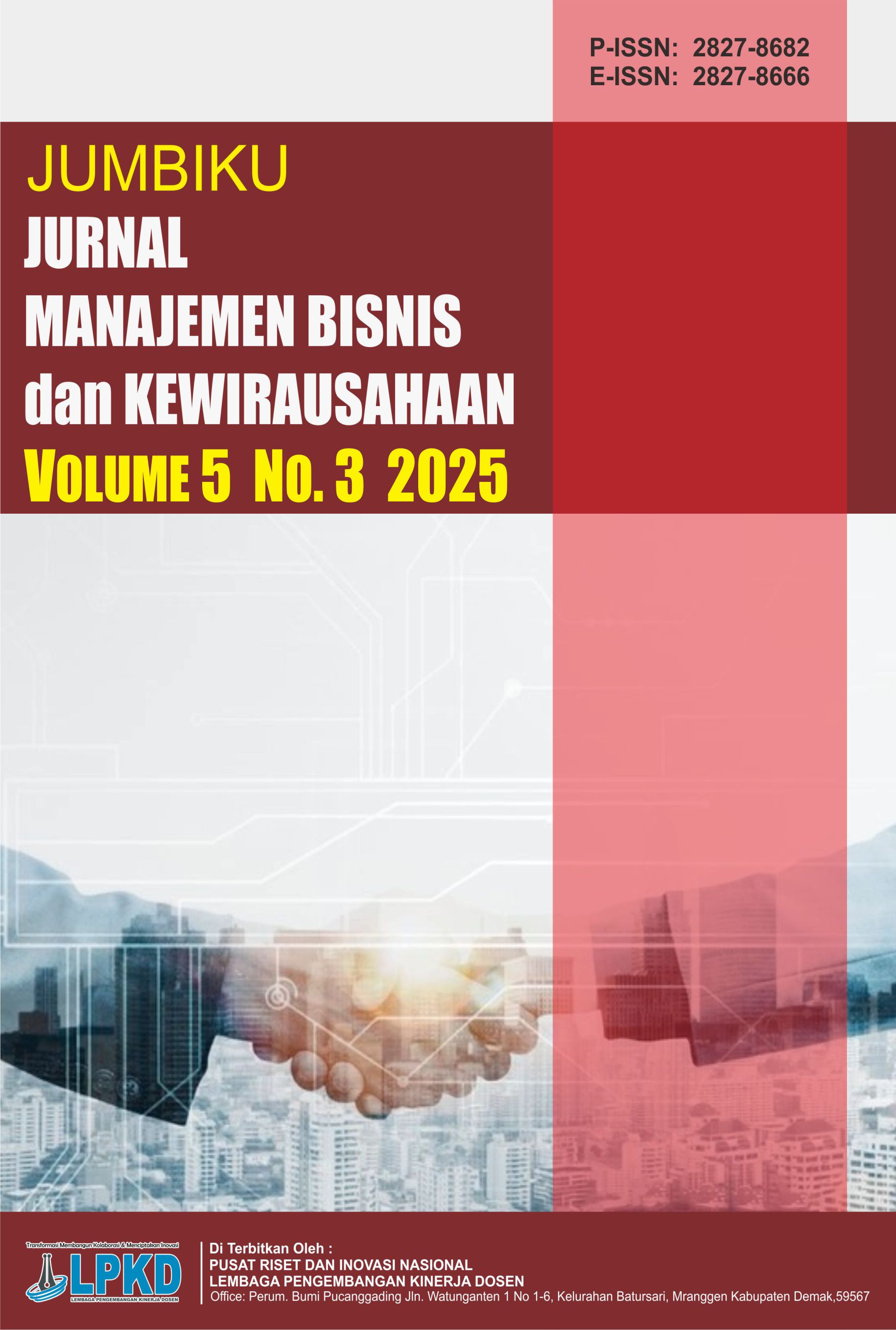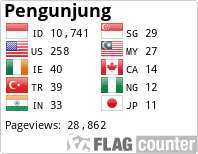Green Human Resource Management: Integrating Sustainability into Talent Development and Retention
DOI:
https://doi.org/10.55606/jumbiku.v5i3.6225Keywords:
Employee Engagement, Green HRM, Sustainability, Talent Development, Talent RetentionAbstract
In the face of global environmental challenges and rising sustainability demands, organizations are increasingly adopting Green Human Resource Management (GHRM) to align human resource practices with environmental goals. This study explores how GHRM practices influence talent development and talent retention through the mediating roles of green organizational culture, green work engagement, and personal norms. Drawing on Resource-Based View (RBV) and Social Exchange Theory (SET), the research utilizes a quantitative design involving 110 respondents from multiple industries in emerging economies. Data were analyzed using Structural Equation Modeling (SEM-PLS), and the results reveal that GHRM significantly enhances both talent development and employee retention, mediated by employee engagement and green culture. Moreover, leadership commitment was found to strengthen the effect of GHRM on sustainability-driven talent strategies. These findings highlight that environmentally oriented HR practices not only advance ecological performance but also nurture a sustainable and motivated workforce. The study contributes theoretically by integrating GHRM, sustainability, and talent management into a unified framework, and provides practical implications for HR managers seeking to embed green competencies, strengthen commitment, and improve retention among sustainability-minded employees.
Downloads
References
Ahmad, S., Ullah, Z., Arshad, M. Z., Kamran, H. W., Scholz, M., & Han, H. (2021). Relationship between corporate social responsibility at the micro-level and environmental performance: The mediating role of employee pro-environmental behavior and the moderating role of gender. Sustainable Production and Consumption, 27, 1138–1150. https://doi.org/10.1016/j.spc.2021.01.028
Ajzen, I. (1991). The theory of planned behavior. Organizational Behavior and Human Decision Processes, 50(2), 179–211. https://doi.org/10.1016/0749-5978(91)90020-T
Ali, M., Shujahat, M., Fatima, T., Lopes de Sousa Jabbour, A. B., Vo-Thanh, T., Salam, M. A., & Latan, H. (2024). How GHRM shapes employees' pro-environmental behavior: A moderated mediation model. Management Decision, 62(7), 1547–1574. https://doi.org/10.1108/MD-05-2023-0787
Alshiha, A., Alghamdi, A., & Khan, S. (2024). GHRM and sustainable performance of manufacturing SMEs: The mediating role of green work engagement. Discover Sustainability, 5, 1167. https://doi.org/10.1007/s43621-025-01167-z
Armstrong, M., & Taylor, S. (2023). Armstrong’s handbook of human resource management practice (17th ed.). Kogan Page.
Barney, J. (1991). Firm resources and sustained competitive advantage. Journal of Management, 17(1), 99–120. https://doi.org/10.1177/014920639101700108
Blau, P. M. (1964). Exchange and power in social life. John Wiley & Sons.
Creswell, J. W., & Creswell, J. D. (2018). Research design: Qualitative, quantitative, and mixed methods approaches (5th ed.). SAGE Publications.
Cropanzano, R., & Mitchell, M. S. (2005). Social exchange theory: An interdisciplinary review. Journal of Management, 31(6), 874–900. https://doi.org/10.1177/0149206305279602
Daft, R. L. (2021). Organization theory and design (13th ed.). Cengage Learning.
Deci, E. L., & Ryan, R. M. (2000). The “what” and “why” of goal pursuits: Human needs and the self-determination of behavior. Psychological Inquiry, 11(4), 227–268. https://doi.org/10.1207/S15327965PLI1104_01
DiMaggio, P. J., & Powell, W. W. (1983). The iron cage revisited: Institutional isomorphism and collective rationality in organizational fields. American Sociological Review, 48(2), 147–160. https://doi.org/10.2307/2095101
Donaldson, L. (2001). The contingency theory of organizations. SAGE Publications. https://doi.org/10.4135/9781452231236
Hair, J. F., Hult, G. T. M., Ringle, C. M., & Sarstedt, M. (2021). A primer on partial least squares structural equation modeling (PLS-SEM) (3rd ed.). SAGE Publications.
Henseler, J., Hubona, G., & Ray, P. A. (2015). Using PLS path modeling in new technology research: Updated guidelines. Industrial Management & Data Systems, 116(1), 2–20. https://doi.org/10.1108/IMDS-09-2015-0382
Jabbour, C. J. C., & de Sousa Jabbour, A. B. L. (2016). GHRM and green supply chain management: Linking two emerging agendas. Journal of Cleaner Production, 112, 1824–1833. https://doi.org/10.1016/j.jclepro.2015.01.052
Kim, Y. J., Kim, W. G., Choi, H. M., & Phetvaroon, K. (2021). The effect of GHRM on hotel employees’ eco-friendly behavior and environmental performance. International Journal of Hospitality Management, 102, 103116. https://doi.org/10.1016/j.ijhm.2021.103116
Lawrence, P. R., & Lorsch, J. W. (1967). Organization and environment: Managing differentiation and integration. Harvard University Press.
Norton, T. A., Zacher, H., & Ashkanasy, N. M. (2015). Organizational sustainability policies and employee green behavior: The mediating role of organizational commitment. Journal of Environmental Psychology, 38, 49–54. https://doi.org/10.1016/j.jenvp.2014.12.008
Paillé, P., Boiral, O., & Chen, Y. (2014). Linking environmental management practices and organizational citizenship behavior for the environment: A social exchange perspective. International Journal of Human Resource Management, 24(18), 3552–3575. https://doi.org/10.1080/09585192.2013.777934
Palupiningtyas, D., Mulatsih, S., Sulistyowati, R., & Sumantri, B. (2024). The role of green HRM in talent management development to improve employee performance in hospitality companies. International Journal of Economics and Management Research, 3(1), 45–58. https://doi.org/10.55606/ijemr.v3i1.185
Renwick, D. W. S., Redman, T., & Maguire, S. (2013). Green human resource management: A review and research agenda. International Journal of Management Reviews, 15(1), 1–14. https://doi.org/10.1111/j.1468-2370.2011.00328.x
Rousseau, D. M. (1995). Psychological contracts in organizations: Understanding written and unwritten agreements. SAGE Publications.
Scott, W. R. (2014). Institutions and organizations: Ideas, interests, and identities (4th ed.). SAGE Publications.
Singh, S. K., Del Giudice, M., Chierici, R., & Graziano, D. (2020). Green innovation and environmental performance: The role of green transformational leadership and green human resource management. Technological Forecasting and Social Change, 150, 119762. https://doi.org/10.1016/j.techfore.2019.119762
Vakouftsis, K. (2025). Integrating green competencies into HRM practices for sustainable talent development. International Journal of Sustainable Business and Management, 6(2), 112–130. https://doi.org/10.1080/ISBM.2025.00021
Wright, P. M., Nyberg, A. J., & Ployhart, R. E. (2020). A conceptual framework for examining human resource management systems and firm performance. Academy of Management Review, 45(2), 303–326. https://doi.org/10.5465/amr.2017.0086
Yusliza, M. Y., Ramayah, T., & Othman, N. Z. (2019). Why examining adoption factors, HR role and attitude towards GHRM practices is the way forward? International Journal of Manpower, 40(7), 1239–1256. https://doi.org/10.1108/IJM-08-2018-0278
Zhao, H., Zhou, X., He, P., Jiang, C., & Ding, Y. (2024). How green HRM affects employee retention through green engagement and organizational identification. Sustainability, 16(11), 4668. https://doi.org/10.3390/su16114668
Downloads
Published
How to Cite
Issue
Section
License
Copyright (c) 2025 Jurnal Manajemen, Bisnis dan Kewirausahaan

This work is licensed under a Creative Commons Attribution-ShareAlike 4.0 International License.








